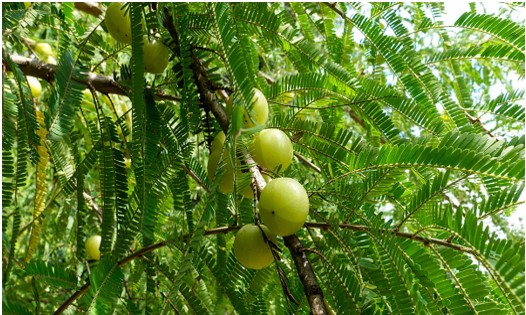Amalaki (Emblica officinalis Gaertn.): A review on its therapeutic properties
DOI:
https://doi.org/10.21760/jaims.8.8.23Keywords:
Ayurveda, Amalaki, Emblica officinalis, Therapeutic, TraditionalAbstract
Amalaki (Emblica officinalis) has a prime position in Ayurveda- an Indian indigenous system of medicine. Amalaki belongs to the family of Euphorbiaceae and is also known as Phyllanthus emblica or Indian gooseberry. Amalaki is one of the most important medicinal plants in Indian traditional systems of medicine (Ayurveda, Unani and Siddha). It is a well-known fact that all parts of Amalaki are useful in the treatment of various diseases. Among all, the most important part is fruit. The fruits of Amalaki are widely used in the Ayurvedic preparation and it increase defense against diseases. It has a beneficial role in degenerative diseases like cancer, diabetes, liver treatment, ulcer, anaemia, eye diseases, and heart trouble and also is an important constituent in hepatoprotective and rejuvenating formulas available. Phytochemical studies on Amalaki disclosed major chemical constituents including tannins, alkaloids, polyphenols, vitamins and minerals. Gallic acid, ellagic acid, emblicanin A & B, phyllembein, quercetin and ascorbic acid are found to be biologically effective. It is enormously used as a tonic to restore the lost body’s energy and vigor, mentioned under Triphala (~combination of three potent fruit) in Ayurveda. In this article, we will emphasize on its various therapeutic applications as per modern researches and our classical texts. We will also discuss about the nutritional value, biochemical constituents, medicinal value of Amalaki and its use as a household remedy.
Downloads
References
Khan, H. Role of Emblica officinalis in medicine, Bot Res. Int. 2009; 2(4):218-228.
Dravya Guna Vigyan by P.V. Sharma Chaukhamba Bharti Acadamy Publication, 2 nd edition, Reprint, Varanasi, vol.2, Chap. 2009; 341:758.
Kangotra Shakshi Et Al: Anti-Ageing Effect of Amalaki: A Review. International Ayurvedic Medical Journal. 2017; 5(7):2451-2456.
Charak Samhita Purvardh Vidyotini Hindi commentary by Pt. Kashinath Shastri and Dr. Gorakhnath Chaturvedi, 22nd edition, published by Chaukhambha Bharti Academy, Varanasi, Sutrasthan. 1996, 4/50 p.98.
Ghosal S, Tripathi VK, Chauhan S. Active constituents of Emblica officinalis, Part I, the chemistry and antioxidant effects of two new hydrolysable tannins, emblicanin A and B. Indian J Chem. 1996; 35:941-8.
Singh S, Verma V, Yadav R, Singh B. Pharmacognostical study of Amalaki (Emblica officinalis Gaertn.). Journal of Pharmacognosy and Phytochemistry. 2018; 7(3):3476-3480.
Scartezzini, P. Review on some plants of Indian traditional medicine with antioxidant activity, J. Ethanpharmacol. 2000; 71(1-2):23-43.
Ghosal, S. Active constituents of Emblica officinalis Part 1-The chemistry and antioxidative effects of two new hydrolysable tannins Emblicannin A and B, Indian J. Chem. 1996, 941-8.
Khanna, P., & Bansal, R. Phyllantidine and Phyllantine fron Emblica officinalis leaf, fruits and in vitro tissue cultures, Ind. J Exp. Biol. 1975; 13:82-3.
Kirtikar K.R., Basu B.D., Indian medicinal plants, vol-3, International book distributors, Dehradun, second edition 1981, p. 2220- 2221.
Mahattanpokai, N. Preparation and Evaluation of Emblica officinalis extract cream, Faculty of Graduates studies, Mahidol University, 2003. Available from: dric.nrct.go.th/bookdetail.php?book_id=156754.
PC Sharma, MB Yelne, TJ Dennis, Database on medicinal plants used in Ayurveda, Vol-3, CCRAS, Dept. of ISM & H, Min. of Health & Family Welfare, Govt. of India, reprint 2005, p. 11.
Pravin M Bhat, Dr. Hari Umale and Dr. Madhukar Lahankar. Amalaki: A review on functional and pharmacological properties. Journal of Pharmacognosy and Phytochemistry 2019; 8(3): 4378-4382
Pravin M Bhat, Dr. Hari Umale and Dr. Madhukar Lahankar. Amalaki: A review on functional and pharmacological properties. Journal of Pharmacognosy and Phytochemistry 2019; 8(3): 4378-4382
Dravyaguna Vigyan; Vol. II; Edited by Acharya P.V. Sharma; Chaukhamba Bharati Academy; Reprint 2012; Pg. 759- 760.
Dravyaguna Vigyan; Vol. II; Edited by Acharya P.V. Sharma; Chaukhamba Bharati Academy; Reprint 2012; Pg. 758.
Charaka Samhita of Agnivesha; Kashinath Pandey & Gorakhnath Chaturvedi; Chaukhamba Prakashan Varanasi; Chikitsa Sthana; 2002; Chapter 4.
Dravyaguna Vigyan; Vol. II; Edited by Acharya P.V. Sharma; Chaukhamba Bharati Academy; Reprint 2012; Pg. 759.
Article of Journal of Pharmacognosy and Phytochemistry; E. ISSN: 2278- 4136.
Kahalekar DN et al. Evalution of Rasayana (Rejuvnative) effect of Amalaki (Embilca Officinalis) in Healthy volunteers, Int J. Res. Ayurveda Pharma.6(1), Jan-Feb 2015.















